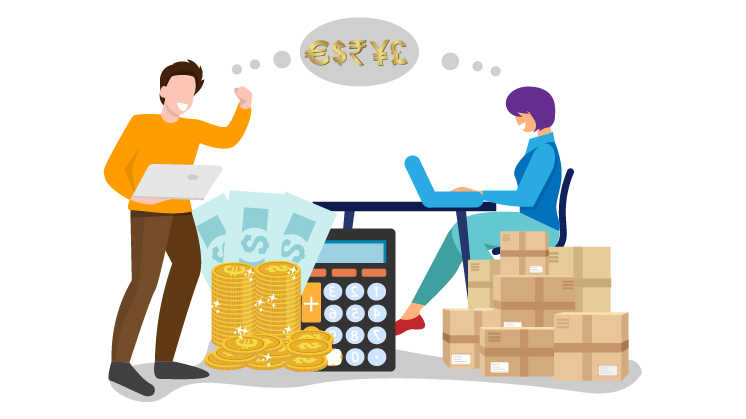If you’re looking to improve your financial well-being and make the most of your money, finding the right financial institution is key. Many people in Denver are choosing credit unions over traditional banks for their unique benefits like lower fees, better interest rates, and a stronger focus on community. In this article, we’ll explore some of the top-rated credit unions in Denver, what they offer, and why choosing a credit union in Denver might be a great financial decision for you.
What Makes a Credit Union Different?
A credit union is a not-for-profit financial cooperative, which means it’s owned by its members rather than shareholders. Unlike for-profit banks that focus on making money for investors, credit unions prioritize the needs of their members. Profits are reinvested to benefit members, typically in the form of lower fees, better loan rates, and enhanced customer service. By banking with a credit union in Denver, you can gain access to more personalized service, competitive rates, and a strong sense of community.
Key Benefits of Credit Unions
- Lower Fees: Many credit unions charge fewer and lower fees than big banks.
- Better Interest Rates: You can often find better rates on savings accounts, CDs, and loans.
- Member-Focused: Credit unions are more focused on serving the needs of their members.
- Local Commitment: Many credit unions are heavily involved in supporting the local community.
Top-Rated Credit Unions in Denver
There are several excellent credit unions in Denver offering a variety of services tailored to meet the needs of their members. Below, we highlight some of the most reputable options.
1. Denver Community Credit Union
Overview
Founded in 1934, Denver Community Credit Union has been serving the Denver metro area for nearly a century. It’s a well-established institution known for its dedication to helping members reach their financial goals. Whether you need basic checking and savings accounts or more complex financial products like auto loans or mortgages, Denver Community Credit Union has a wide range of options.
Key Features
- Personal Loans and Auto Loans: They offer highly competitive rates on personal loans and auto financing.
- Financial Literacy Programs: Denver Community Credit Union stands out for its commitment to financial education, offering classes and workshops to help members manage their finances.
- Mobile and Online Banking: With a user-friendly app and online services, members can manage their accounts on the go.
Why Join Denver Community Credit Union?
For individuals looking for a credit union in Denver that combines competitive financial products with strong educational resources, Denver Community Credit Union is a great choice. It’s especially ideal for those who value learning how to improve their financial health.
2. Bellco Credit Union
Overview
Bellco Credit Union is one of Colorado’s largest and most popular credit unions. Founded in 1936, Bellco offers a full suite of financial services ranging from everyday banking needs to more advanced options like investment services and insurance products.
Key Features
- High-Interest Savings Accounts: Bellco consistently offers some of the best interest rates on savings and money market accounts in Denver.
- Full-Service Financial Solutions: In addition to standard banking services, Bellco also offers investment opportunities, retirement planning, and insurance.
- Extensive Branch and ATM Network: With multiple branches in the Denver area and a large ATM network, Bellco provides excellent accessibility to members.
Why Join Bellco Credit Union?
Bellco Credit Union is perfect for those who want a broad range of financial products from a trusted and established credit union in Denver. If you value having access to a variety of services while still benefiting from the personalized touch of a credit union, Bellco may be the right choice for you.
3. Canvas Credit Union
Overview
Canvas Credit Union, previously known as Public Service Credit Union, has been serving Colorado for over 80 years. Canvas is committed to creating a positive and easy banking experience for its members, offering everything from basic checking accounts to home loans and investment services.
Key Features
- Low-Fee Accounts: Canvas Credit Union offers no-fee or low-fee checking accounts, making it an attractive option for those looking to save on banking costs.
- Competitive Loan Options: Canvas provides competitive rates on mortgages, personal loans, and car loans.
- Digital Banking Solutions: With a top-rated mobile app, members can easily manage their finances from anywhere, at any time.
Why Join Canvas Credit Union?
Canvas is a fantastic option for Denver residents looking for a member-first credit union with a strong history and a wide range of financial products. Whether you’re seeking a checking account, a mortgage, or a car loan, Canvas offers competitive options that make managing your money easier.
4. Elevations Credit Union
Overview
Elevations Credit Union is highly regarded for its commitment to sustainability and exceptional member service. Founded in 1953, this Boulder-based credit union has expanded its reach across Colorado, including several branches in the Denver area.
Key Features
- Eco-Friendly Banking: Elevations has been recognized for its sustainability efforts, including green loan programs and paperless banking options.
- Award-Winning Service: The credit union has earned numerous awards for its commitment to member satisfaction and community involvement.
- Flexible Loan Options: Whether you’re looking for a home loan, car loan, or personal loan, Elevations offers flexible rates and terms to meet your needs.
Why Join Elevations Credit Union?
If you’re environmentally conscious and looking for a credit union in Denver that shares your values, Elevations is a great choice. Their commitment to sustainability and customer service makes them a standout option.
5. Credit Union of Colorado
Overview
With over 85 years of service, Credit Union of Colorado is one of the most trusted financial institutions in the state. Known for its extensive financial education resources, it provides members with the tools they need to make smart financial decisions.
Key Features
- Free Financial Education: They offer free classes, one-on-one financial counseling, and a wealth of online resources.
- Excellent Mortgage Options: For homebuyers, the Credit Union of Colorado offers competitive mortgage rates and flexible terms.
- Community Focused: They are deeply involved in supporting local Denver communities through various outreach and support programs.
Why Join Credit Union of Colorado?
For those seeking a credit union in Denver with a strong educational focus and competitive home loan options, Credit Union of Colorado is an excellent choice. Its dedication to empowering members with financial knowledge sets it apart.
How to Choose the Right Credit Union in Denver
When selecting a credit union in Denver, consider the following factors:
- Eligibility Requirements: Some credit unions are open to specific groups, such as employees of certain companies or residents of particular areas.
- Products and Services: Make sure the credit union offers the services that are important to you, whether it’s a low-fee checking account, competitive loans, or financial planning.
- Fee Structure: Always review the fee schedules and compare them with other institutions to ensure you’re getting the best deal.
- Customer Service: Look for reviews and testimonials about how the credit union treats its members and whether it provides responsive, helpful customer service.
Conclusion
A credit union in Denver can provide you with better rates, fewer fees, and a more personalized banking experience compared to traditional banks. The credit unions we’ve highlighted—Denver Community Credit Union, Bellco Credit Union, Canvas Credit Union, Elevations Credit Union, and Credit Union of Colorado—are all excellent options depending on your specific financial needs. Take the time to explore what each has to offer and choose the one that aligns with your financial goals and values.
By joining a credit union in Denver, you’ll not only benefit from competitive banking services but also contribute to a community-focused, member-owned institution that prioritizes your financial well-being.





